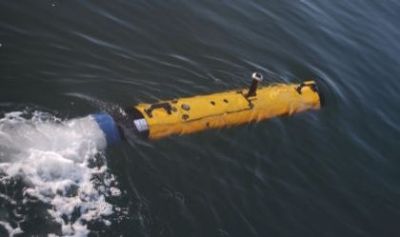Bluefin Robotics has developed a network of unmanned underwater vehicles,(UUV’s) in order to enable independent adaptive co-operation among UUVs that are used in ocean sensing applications without constant contact with vehicle operators.
 Unmanned underwater vehicle
Unmanned underwater vehicle
These UUVs are automated by integrating MOOS-IvP, an open-source C++ software system. The autonomy system software was demonstrated by scientists in a Bluefin-9 UUV at Boston Harbor.
Scientists from the Laboratory for Autonomous Marine Sensing Systems (LAMSS) and experts from Bluefin demonstrated Bluefin-9 UUV at the Massachusetts Institute of Technology (MIT) in Cambridge. The demonstration at sea showed that Bluefin-9 UUV can transmit sidescan sonar images, which are wavelet-compressed through an acoustic modem. The UUV then displayed the images on a control and command display that is on-board a surface vessel.
Previously, two large Bluefin-21 UUVs were integrated with the MOOS-IvP autonomy module for undersea acoustic research by Bluefin researchers. The demonstration was made using a different computer for the MOOS-IvP software and payload data. In Bluefin-9, the MOOS-IvP software was installed in the currently used UUV computer. Bluefin officials stated that MOOS-IvP software was interfaced with UUV's Huxley software operating system in order to transmit core vehicle information and the MOOS-IvP software operates as a backseat driver.
By using the MOOS-IvP software, it is possible for UUV users to create smart payloads and novel behaviors by training the vehicle to alter its behavior based on real-time payload information.